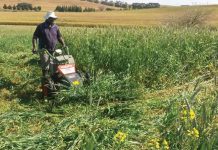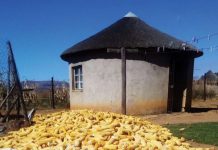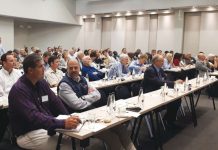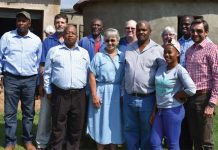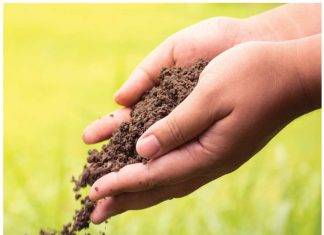May 2017
MARESE LOMBARD, Faculty: Economic and Management Sciences, University of the Free State
Every businessman knows that tax planning plays an integral part in the successful management of the business, whether it is a big corporation or a medium-sized family farming operation.
During the Budget Speech that was delivered on 22 February this year, numerous tax changes were introduced that led to a bit of uncertainty as to whether or not these changes will have a drastic impact on a business.
Income tax changes
The most prominent change was the introduction of a new tax bracket, taxing all taxable income of a natural person or special trust exceeding R1 500 000 at 45%. This will have a substantial impact on producers trading as sole traders, considering that all taxable income exceeding this amount will lead to an additional 4% tax that will have to be paid in comparison to previous years where the maximum marginal tax rate was 41% or lower.
Another drastic tax change was the increase in the taxation of trusts. Trusts were previously quite heavily taxed at 40%, but this has now been increased to an even heavier tax rate of 45%. This has a lot of producers (using a trust as their business mechanism) worried about the sustainability of a farm being run in the form of a trust.
Although the tax rates of companies remained unchanged at 28%, the dividends tax was also increased from 15% to 20%, implying that investors will now have to pay an additional 5% on their returns.
Capital gains tax
Capital gains tax effectively forms part of a person’s income tax liability, but the changes in the income tax rate will now also influence the effective tax rate of capital gains in South Africa. From the 2017 year of assessment, 40% of a natural person’s capital gains is included as taxable income, meaning that the highest effective tax rate for a natural person was 16,4% (40% inclusion rate x 41% highest marginal tax rate).
With the increase of the income tax rate to 45%, the highest effective tax rate payable on capital gains has now increased to 18% (40% inclusion rate x 45% highest marginal tax rate). For companies, 80% of capital gains have to be included as taxable income and with no change in the tax rate of companies, the effective tax rate on capital gains for companies remains at 22,4% (80% inclusion rate x 28% income tax rate).
VAT
An increase in the VAT rate of South Africa was expected, but to no avail. No drastic changes were announced with regards to VAT, but there has been speculation over the past few years that some agricultural items will be removed from the zero-rated items list, which could also lead to a drastic change in the cash flow of a farm producing zero-rated items (such as maize or fresh fruit and vegetables).
This means that in future there might be an output tax of 14% payable on the sale of the zero-rated items. What is also worth noting is that a lot of registered VAT vendors have difficulty claiming their refunds, especially with regards to the diesel rebates.
The diesel rebate is completed together with all other VAT-related supplies on the same VAT return. If the VAT return is filed, it clearly indicates the amount of VAT owing as well as the diesel rebate refundable to the producer. Most producers then just pay the difference, which is the logical thing to do, but as seen over the last few years, the full amount of VAT owing (before taking the rebate into account) should be paid to SARS after which the diesel rebate will be refunded.
The diesel rebates have also become increasingly difficult to claim, with SARS now auditing numerous returns filed for diesel rebates. Accurate records must be kept clearly showing the litres of diesel consumed by each vehicle or tractor as well as when it was used and the location where it was used. This measure is to ensure that no phantom diesel rebates are claimed.
A producer under the compulsory threshold of R1 million has to consider whether the benefit from being a VAT vendor exceeds the administration and compliance costs that are associated with VAT. Any person making more than R50 000 taxable supplies in a twelve-month period can register voluntarily for VAT, but again with the possibility of some agricultural products not being zero-rated anymore the benefit of registering has to be considered carefully.
Tax-free investments
A person can invest up to R500 000 per lifetime in a tax-free investment. All income generated by this investment will then be tax-free, irrespective of whether the income generated is in the form of interest, dividends or capital gains.
This R500 000 limit is a per person limit and all tax-free investments will be added together to determine if the threshold is exceeded. A person will also be limited to invest no more than R33 000 per year (previously R30 000). If the annual or lifetime limit is exceeded, 40% tax is payable to SARS on the amount whereby the contribution exceeds the respective limits.
Trusts or companies?
Trusts are one of the most popular entities used in estate planning in order to limit the amount of estate duty payable upon death, but with the introduction of the new anti-avoidance measures (section 7C of the Income Tax Act), one has to wonder whether SARS’s focus on trusts will decrease or if it is something to expect for a lot of years coming.
Although many jump to the conclusion that the better option to consider is a company (only taxed at 28%), the tax rate alone cannot be the only consideration when choosing the best entity to use for either business purposes or estate planning.
The Companies Act can lead to very time-consuming aspects for a business, not to mention the strict responsibilities placed upon its shareholders. The dividends tax of 20% must also be considered, especially if there will be a limited number of shareholders.
Conclusion
With the ever-changing tax legislation, it is important to stay on top of all changes happening and plan your business’s tax accordingly so as to ensure the sustainability thereof in the long term.
Publication: May 2017
Section: Focus on




